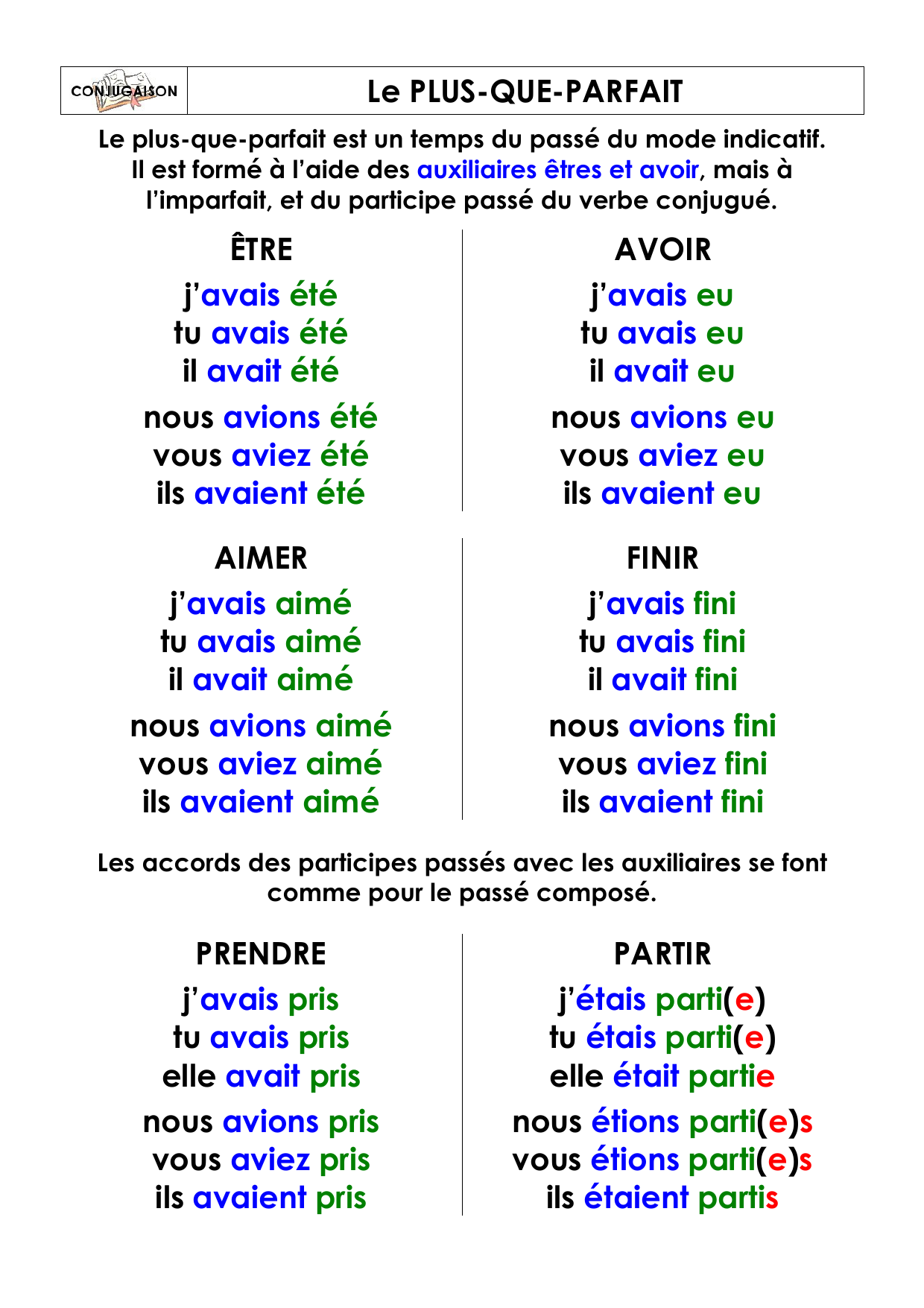

On a timeline, the plus-que-parfait precedes the passé composé and the imparfait. The various past tenses allow for a sequencing of events in past narration. We will distinguish between the present and past of the modes of the conditional and subjunctive modes, as they are used on a regular basis.

Out of the remaining personal modes, five are used often, two are used in very literary contexts, and one is rarely used. The tenses we use for past narration are something to focus on, since we often narrate things that have already happened to us or listen to people talking about things that have happened, as in the news.

Out of eight indicative modes, six are used regularly and two are not used that often, except in a literary context. Here is a table of the various French tenses, beginning with groups of verbs in the indicative mode and then continuing with other personal modes of verbs that we can contrast with the indicative before moving on to the impersonal modes of verbs. Compare scitus, -a, -um, the masculine, feminine, and neuter perfect passive participle of scire (“to know”) with su or sue, masculine and feminine forms of the past participle of “savoir”. The French past participle corresponds to the fourth principal part in Latin. The past participle, which is the second component of these compound tenses, remains the same throughout all conjugations: “Il a fait”, “Nous avons fait”, “Elles ont fait”, etc. Luckily, there are just two auxiliary verbs that you will need to use for these compound tenses, avoir and être. Auxiliary verbs follow the same principles of radical formation to which different endings are added to show the subject of action. Remember that simple can be translated as “single” in French or as its English cognate.Ĭompound tenses consist of two parts: an auxiliary verb and a past participle – yes, this is another form of the French verb that needs to be memorized, along with which auxiliary verb to use. There is only one part to simple tenses and modes. Simple tenses involve forming a radical from a French verb, according to what tense and / or mode is being expressed, and adding endings that correspond to the subject of action. Simple and Compound Tensesīefore I get to the various French tenses, I would like to place them within two broad categories, which are simple and compound tenses. Tense is thus built into the use of verbs as words that convey an action or occurrence within a sentence. In French you need to select a conjugated form of a verb in order to give it agency.

These nuances specify when things take place without needing to provide too much context. It can also contrast ongoing action with action that has a specific duration of time, as with the passé composé and imparfait. etc., although these are nice to add for style. This can give a very clear idea of when actions take place, even without using phrases such as “yesterday”, “the day before”, “when I finish”, “first. Within the past, present, and future tense categories, there are subcategories that allow us to further place action within a chronology. The three broad categories of tense in French are past, present, and future. (In the above sentences these are: je, nous, vous, and tu respectively.) French Tenses: Past, Present, and Future The main thing to remember is that a French verb needs to be conjugated according to the subject of action. “J’aime les bananes”, “Nous avons acheté des fruits”, “Serez-vous au restaurant?” and “Regarde !” are all examples of complete sentences. For a sentence to be complete, we need a verb, no matter how short the sentence is. Tenses are forms of verbs that allow you to know when certain actions are taking place, whether these actions occur in the past, present, or future. French Verbs: The Ultimate Guide to Different French Tenses


 0 kommentar(er)
0 kommentar(er)
